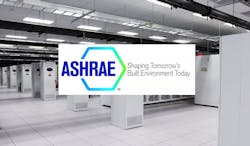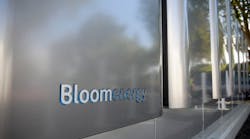There is no question that improving data center energy efficiency is an important goal. However, the basic function of a data center is to provide a secure physical space, ensure the availability of power and environmental operating conditions suitable for the reliable operation of the IT equipment. Moreover, there are a variety of complex business and technical issues which interact that can affect the design, as well as the present and future operating conditions over the operating life of the data center. Therefore, being able to efficiently adjust to IT equipment environmental requirements as they continue to broaden in the future will remain an important and ongoing factor.
Data Center Frontier Special Report on Data Center Cooling – Download it Now
This article is the final article in a series on data center cooling taken from the Data Center Frontier Special Report on Data Center Cooling Standards (Getting Ready for Revisions to the ASHRAE Standard)
Enterprise and other organizations may choose to follow the ASHRAE thermal guidelines (recommended or allowable) for their own business requirements as they see fit. However, other organizations such as hyperscale Internet and cloud service providers have different requirements and commonly use custom hardware made their specifications. The environmental specifications of that equipment may even be broader than the current A4 and how they chose to cool it (mechanically or otherwise) is again a business decision. It is therefore not sensible to mandate that a data center cooling system’s energy efficiency be designed and bound by the “recommended” envelope, when the operator has no intention to operate in such a manner.
As previously noted, the Internet search and social media giants continue to pioneer and explore the expanded use of economizers and higher IT air intake temperatures, while more traditional organizations are left to ask: what is the safe operating temperature and humidity range for the classic enterprise mission-critical data centers operated by financial institutions, airlines, and governments? Moreover, what should the colocation operators, who are driven by need to satisfy their wide variety of customer’s requirements, specify or offer to support for their environmental operating ranges?
Is Regulation the Answer?
Some extreme proponents of “sustainability” who are usually the most critical of data centers, will say that governmental regulation is the only way to improve energy efficiency and it should not matter if it affects the cost of building or operating cost of any type of building, including data centers. There are others who are part of the industry, such as the members of ASHRAE Technical Committee 9.9, who have publicly declared their concerns of the restrictive compliance requirements of 90.4. They are clearly inherent supporters of energy efficiency, yet recognize that over-zealous and prescriptive mandatory measures are not the best method, and in fact could actually hinder this process.
The potential impact of 90.4 will most likely increase the cost of preparing documentation during the design stage to submit plans for building department approvals. It will also almost certainly require much more time to be reviewed by AHJs (Authorities Having Jurisdiction) who are not familiar with many of data center specific issues. Worse yet, it could limit or prohibit the hyperscale pioneers which previously had the freedom to design and build energy saving, but unconventional cooling systems, by having local build departments reject or limit their future design options.
Unlike traditional enterprise data centers (which perhaps were previously less aware of or concerned about energy efficiency), colocation and cloud service providers are highly competitive businesses. Their TCO model inherently drives them to improve their energy efficiency wherever possible. The organization’s decisions should able to be made based on any other factors such as the cost of energy or local tax incentives and customer’s market demands, as well as their own strategic technical and business objectives. Therefore, they should be allowed to build their facilities wherever customers need them, and use whatever designs that will allow them to adapt to the best and most cost effective use of local conditions and resources.
The Road Ahead
It is important for the data center industry to be aware and follow the changes in the upcoming 4th edition of the TC9.9 Thermal Guidelines and the finalization of the 90.4 and 90.1 standards in 2016. As has been discussed, the recommended (and allowable) operating ranges have expanded as IT equipment becomes more tolerant of much broader ranges than previous generations of hardware. However, while historic industry practices have inhibited many enterprise data centers from increasing their operating temperatures, due to perceived risk, this is changing.
All IT manufacturers have a vested interest to continue to develop energy efficient hardware to be even more environmentally tolerant to minimize or eliminate the need mechanical cooling. Greater understanding and interaction of facilities and IT operational management domains benefits everyone. By doing so, they permit more power to be used for IT hardware and less for cooling the facility. This allows the data center to install more IT equipment and computing capacity, without increasing the total power used by the site, which is the ultimate energy efficiency goal.
We hope you find this article series helps you improve your data center energy efficiency. If you like you can download the Data Center Frontier Special Report on Data Center Cooling Standards in PDF format from the Data Center Frontier White Paper Library courtesy of Compass Data Centers. Click here for a copy of the report.

